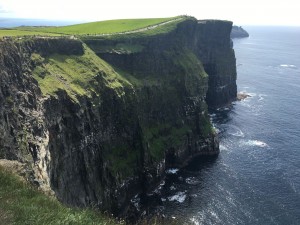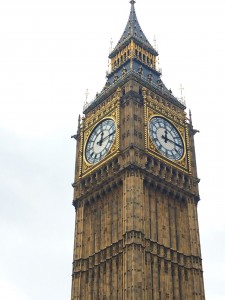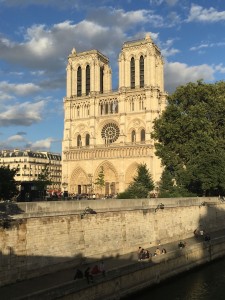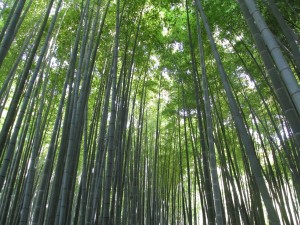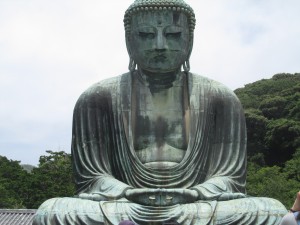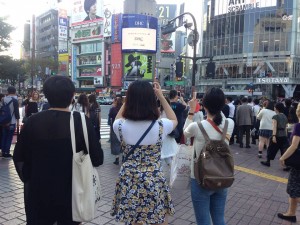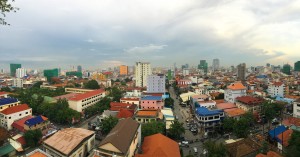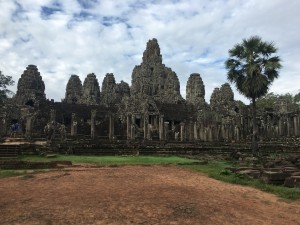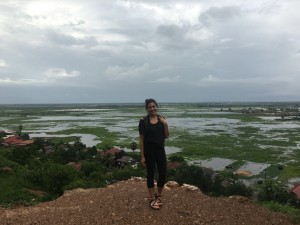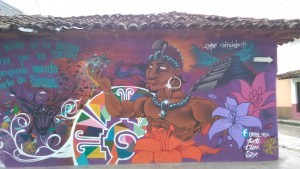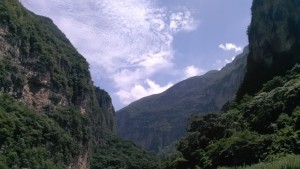This summer I traveled to San Cristobal de las Casas, a small city located in Chiapas, Mexico for a seven week, faculty led study abroad program. This program was undoubtedly one of the best experiences I have ever had and even two months later, I still think about it and miss it all every day.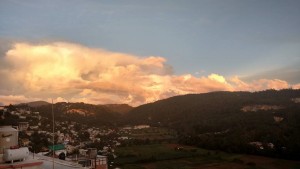 One of the most unique aspects of this program was the two-week service learning portion. Each student was assigned an organization to work with in or around San Cristobal and was partnered with a Mexican student who was working on the project long-term. I worked with another student from San Cristobal at a small school in Zinacantan, a neighboring Mayan community. The school, Yo’onik (Yo’onik is Tzotil for ‘heart’), is a non-profit that provides remedial education for students for just as small fee (it is free on Saturday though so every child has an opportunity to attend at least once a week). It is entirely operated by volunteers and funds from donors.
One of the most unique aspects of this program was the two-week service learning portion. Each student was assigned an organization to work with in or around San Cristobal and was partnered with a Mexican student who was working on the project long-term. I worked with another student from San Cristobal at a small school in Zinacantan, a neighboring Mayan community. The school, Yo’onik (Yo’onik is Tzotil for ‘heart’), is a non-profit that provides remedial education for students for just as small fee (it is free on Saturday though so every child has an opportunity to attend at least once a week). It is entirely operated by volunteers and funds from donors.
This project definitely pushed me way out of my comfort zone. During these two weeks, I generally had the mornings free because the children did not arrive to their classes until 1. I ended up being able to spend that extra time hanging out with my host family or with my service learning partner exploring the city and the areas around San Cristobal. For almost two weeks, I was spending the majority of my time with people who did not know English and I was forced to really push myself in trying to learn and improve my own Spanish skills.
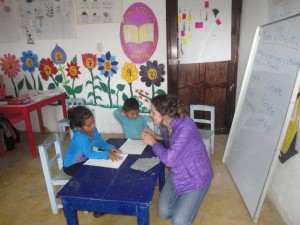 In the afternoons, we would take one of the vans or cars that drive up to Zinacantan to start teaching classes. The first week I helped my project partner teach classes on the environment. The kids were enthusiastic to learn and although they were a little shy around me at first, it did not last long. We would spend recess playing tag and hide-and-go-seek or I would just monitor them as they played and pretended on a playground made completely out of tires.
In the afternoons, we would take one of the vans or cars that drive up to Zinacantan to start teaching classes. The first week I helped my project partner teach classes on the environment. The kids were enthusiastic to learn and although they were a little shy around me at first, it did not last long. We would spend recess playing tag and hide-and-go-seek or I would just monitor them as they played and pretended on a playground made completely out of tires.
After classes, we would plan the lesson for the next day and make all the materials necessary—the school does not have a lot of resources so making materials for the students required a lot of creativity. I would usually get back to the center in San Cristobal around 5 or 6 which left the evening free for exploring. One of my more memorable evenings was climbing to the top of a huge hill where the Iglesia de Guadalupe sits and watching the sun-set over the mountains surrounding San Cristobal. I am easily overwhelmed by the beauty of the world, but there really was something magical in the peace of that evening.
The next week of my service learning project was a little bit different. My project partner asked me if I would be willing to teach English classes and while there’s not much I could teach the children in a span of a week it was a wonderful experience that pushed me completely out of my comfort zone. Let’s just say we spent a lot of time playing loteria (Bingo) because I will be honest, I’m not exactly what one might refer to as ‘qualified’. But I am hoping the kids got something out of it, even if that was just having fun for a week with a teacher from a different country.
One of the most interesting things about working in Zinacantan is that the culture there is completely different than it is in San Cristobal. It is a Mayan community that has its own laws and customs apart from the Mexican government. While I was working there, there was a celebration going on. The hill where Yo’Onik sits is considered sacred and as part of a ritual during this celebration, all of the most important political leaders would climb to the top of the hill and a band would play for them. I never figured out why or what the significance was, but it was definitely an interesting experience to have the leaders of Zinacantan standing right outside of our little school.
Another evening, one of the teachers at the school invited us over for coffee and pan dulce. We sat in her kitchen which was made entirely out of adobe while her sisters worked on artesanias to sell all throughout Mexico. The grandmother (I believe) showed me another room where they make and store all of these beautiful pieces of art—everything from purses, to belts, to dolls. I was humbled by their hard work and all of the beautiful things they make with their hands and grateful for their hospitality and for showing me this part of their lives.
The last day of my service learning project I was sick and was not able to go. This is probably my biggest regret (not that I had much control), but I was sad that I could not say goodbye to the kids. They did all write me sweet little notes though and stuck them on a big piece of construction paper. I have it hanging in my bedroom now because it really meant a lot—the whole experience did. Although the service learning portion was only two weeks of the entire program, it definitely impacted me deeply. It was a unique and unforgettable opportunity that I am forever grateful for.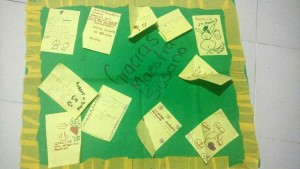
-Susanna Hedenstrom, Summer 2016
